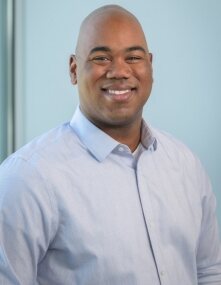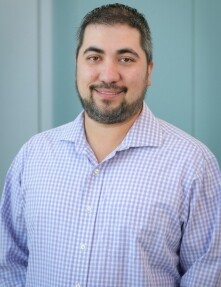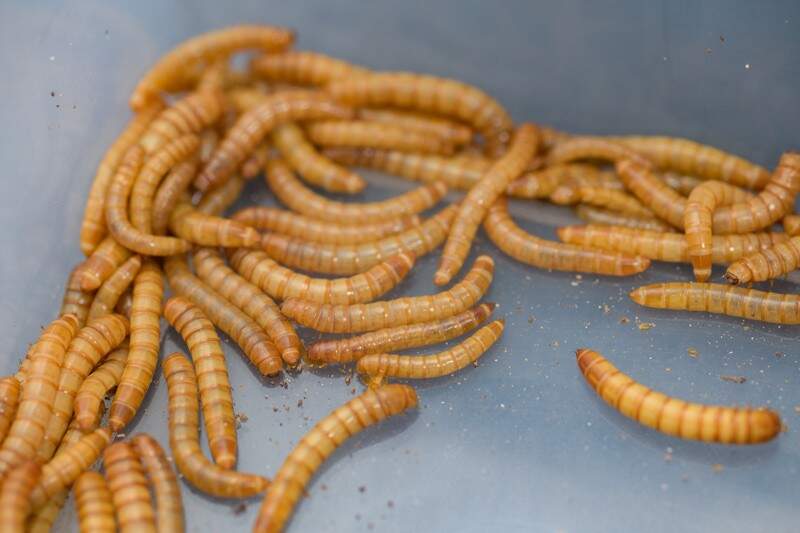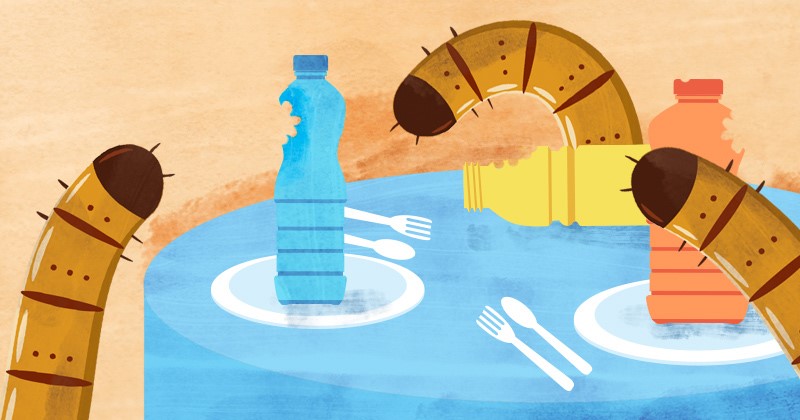New hope for biodegrading plastics may lie in worm microbiome
Fresh hope for new ways to biodegrade plastics may lie in an unusual place … the gut of the yellow mealworm, according to University of Delaware researchers Kevin Solomon and Mark Blenner.
About an inch long and typically taken for fish food or a tasty treat for robins, wrens or woodpeckers, yellow mealworms are the larvae of the mealworm beetle.

Kevin Solomon
This is because these microbes have the unique ability to rapidly degrade a wide array of plastics used in single-use drink containers and food packaging. And they aren’t picky eaters either.
Dirty plastics? Yes, please. Mixed plastics? No problem.
Yet, little is known about which microbes show up in the worm’s digestive tract to do the job and how they get the job done at the molecular level. To answer some of these questions, Solomon and Blenner are feeding the worms different types of mixed plastics, including those contaminated with common food wastes, and taking a microbial census, in hopes of gleaning insights that can help drive new biological ways to upcycle plastics.
“A lot of chemical processes require separating types of plastic, and we know from recycling that sorting plastics is too much work for people to handle,” said Blenner. “Lucky for us, biology works in the dirty world.”

Mark Blenner
So far, scientists haven’t found the correct microbes to biodegrade plastics. While other research in this area has looked at individual microbes to tackle this task, Solomon and Blenner are finding that a collection of different microbes does a better job of breaking plastic materials down.
Big ideas begin with small steps
Earlier work by the pair and a student involved in UD’s Chemistry-Biology Interface program provided evidence that only the microbes in the worm’s microbiome participate in breaking down the plastics; the yellow mealworm itself does not. This is different than other worm systems where the worm does some of the job, the way our stomachs make acid to help microbes break down our food. This initial data helped the research team optimize the growing conditions for the worms to maximize their ability to eat plastic, with help from two postdoctoral researchers supported through seed funding from UD’s Center for Plastics Innovation.
Now, the researchers and two undergraduate students on the UD team will focus on understanding how microbes in the mealworm’s gut degrade the plastic and which microbes are most important to the process.
“Each microbe performs a different part of the chemistry. We want to know which part of the chemistry each microorganism does and what enzymes, or tools, they have available to do the work,” said Solomon, the project principal investigator.
This can be tricky, since the researchers already know that the types of microbes present in the worm’s gut change based on the type of plastics the microorganisms eat. Blenner likened it to the differences that diet can make on a person’s gut microbiome.
“The microbes in our stomachs in some ways are self-tuning for the foods that we are eating,” said Blenner, a co-PI on the project. “People with high-fat diets, for example, would have a different gut microbiome than people who eat a low-fat or vegetarian diet. The same thing happens with the worms.”

Microbes in the yellow mealworm’s gut microbiome are experts at breaking down plastics. UD researchers Kevin Solomon and Mark Blenner are exploring which microbes show up to do the job and how they do the work, in order to find new biological ways to upcycle plastic.
“Basically, we’re baiting a chemical hook with plastic and when the microbes eat the plastic — and the hook — we will have a handle to pull out the microbes using a technique called fluorescence activated self-sorting so that we can study them,” Blenner said, chuckling. “It’s kind of funny, because what do we normally bait hooks with? Worms.”
The tagging technique was developed by the UD team’s collaborators Aaron Wright, a senior scientist, and Andrea Steiger, a chemist, at PNNL. It will help the researchers decode which microbe does what by enabling the team to see proteins, coded in parts of the microbe’s DNA, that are important for a particular aspect of breaking the plastic down.
“By looking at the chemistry of the plastics and the chemical processes required to degrade them, we can design small molecule probes that very selectively tag the proteins that play a role in degradation,” Steiger said. “These tags ‘light up’ the microbes that have those plastic-degrading proteins, and we can isolate and identify them. Not only do we plan to identify the microbes that eat the plastics- but also the biochemical mechanisms by which they do so. This is incredible information that we can use to build up microbial communities to address global challenges.”
Microbes talk to each other by exchanging several small molecules, which may or may not be important for coordinating the expression of proteins and enzymes needed to efficiently degrade these materials and for handing off a part of the process to one microbe or another. Better understanding this process will help the research team learn to control and optimize communities of microbes to address various global challenges.
“For the first time, this will let us get a handle on the critical elements and how they must come together … what is the design, so that we can build them for a variety of different scenarios,” said Solomon.
The project will be further advanced via funding through the FICUS program, or Facilities Integrating Collaborations for User Science. Sponsored by BER, FICUS allows access to multiple user facilities, including the Joint Genome Institute and the Environmental Molecular Sciences Laboratory, through a single project proposal.
If successful, Solomon said it’s possible to imagine a world with plastic-degrading compost or specialized microbe mixtures for breaking down plastics in industrial bioreactors. Maybe the work could inform solutions for environmental issues such as microplastics, those pesky last bits of plastic that find their way into the water. For now, though, it’s about trying things out, gathering data and seeing how far they can take it.
In other work, funded through a $569,599 grant from DOE’s Office of Science, Solomon is studying how specific fungi found in the digestive tract of plant-eating ruminants, such as cattle, sheep and giraffes, help their host animals thrive on grasses. Degrading grasses is considered a harder part of breaking down cellulose for biofuels, and the microbes currently used for industrial biofuel production cannot convert plant biomass into its component sugars without prior help from heat and chemicals.
“A cow is not a pressure cooker, but these fungi have effective strategies for breaking through all the chemistry without tools like heat, acids and pressure,” he said.
These same processes can accelerate the conversion of cellulose in agricultural residues for biofuels. Solomon plans to develop genetic tools to identify and manipulate the enzymes that help these microbes do the heavy lifting in breaking apart renewable plant material in the natural world. This goal is to establish design principles to engineer new fungal strains with the capacity to do the job in industry, to help produce sustainable fuels, materials and other value-added compounds.
About the UD research team
Mark Blenner joined UD in January 2021 as an associate professor of chemical and biomolecular engineering following nearly a decade at Clemson University. His research focuses on engineering unconventional microbes to make them better at producing materials from commodity chemicals to specialty high-value pharmaceutical intermediates to biopharmaceuticals. Previous or ongoing projects have included converting military derived plastic waste into food-grade materials; transforming low-value fats into higher-value omega-3 fatty acids for fish feed; and working with NASA on ways to upcycle waste into products astronauts on long-duration projects require.
Kevin Solomon, an assistant professor of chemical and biomolecular engineering, also joined UD this past January. Solomon’s lab has a history of studying environmental microbes and microbial communities and engineering them in different ways. He previously was an assistant professor of agriculture and biological engineering at Purdue University.
Article by Karen B. Roberts | Photo by Evan Krape | Illustration and video by Jeffrey C. Chase
(featured on UDaily, 10/29/2021)

